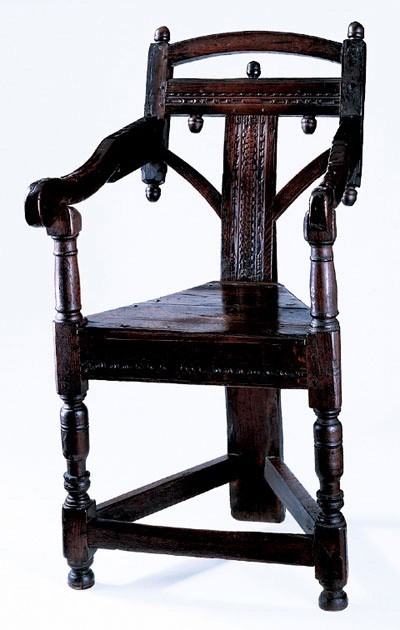
Joined chair attributed to John Elderkin, eastern Connecticut, Rhode Island, or Massachusetts, 1640–1680. Oak, cherry, and ash. H. 42 1/2", W. 22 1/4", D. 19 1/4" (seat). (Chipstone Foundation; photo, Gavin Ashworth.)
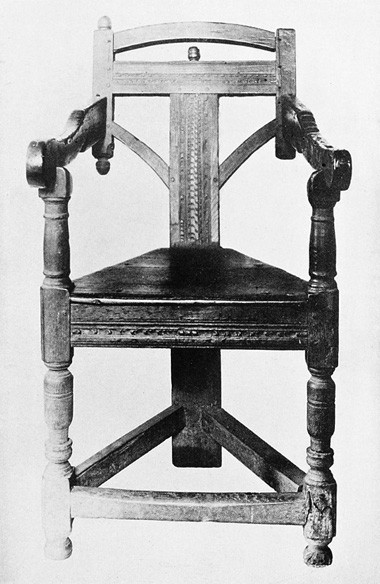
Joined chair illustrated in fig. 1, as it appeared in Wallace Nutting’s Furniture of the Pilgrim Century, 2 vols. (1921, reprint ed.; Framingham, Mass.: Old America Company, 1928), 2: no. 1774.
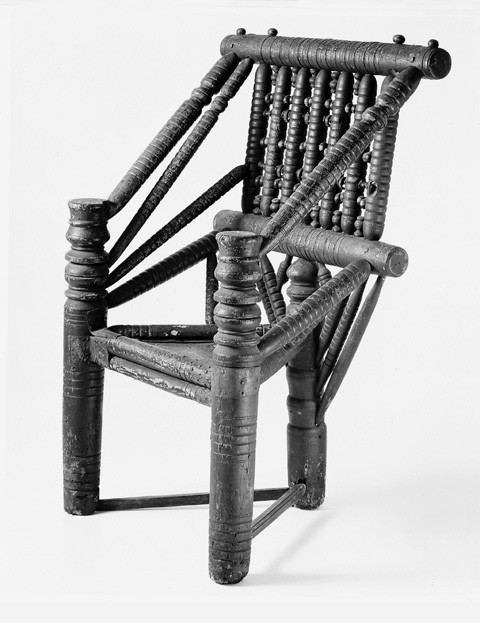
Turned chair, England, 1550–1600. Ash. H. 44 7/8", W. 30 3/8", D. 22 3/8". (Formerly the collection of the late John Hill. Present whereabouts unknown; photo, George Fistrovitch.)
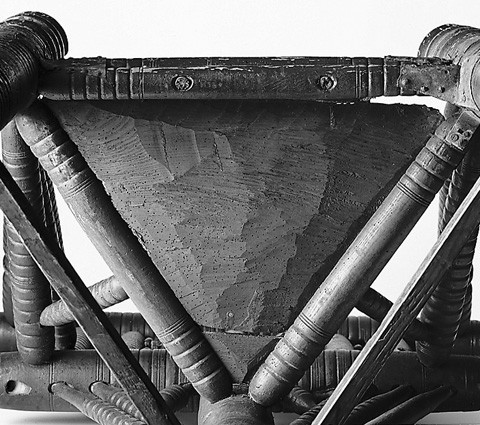
Detail of the underside of the turned chair illustrated in fig. 3. (Formerly the collection of the late John Hill. Present whereabouts unknown; photo, George Fistrovitch.)
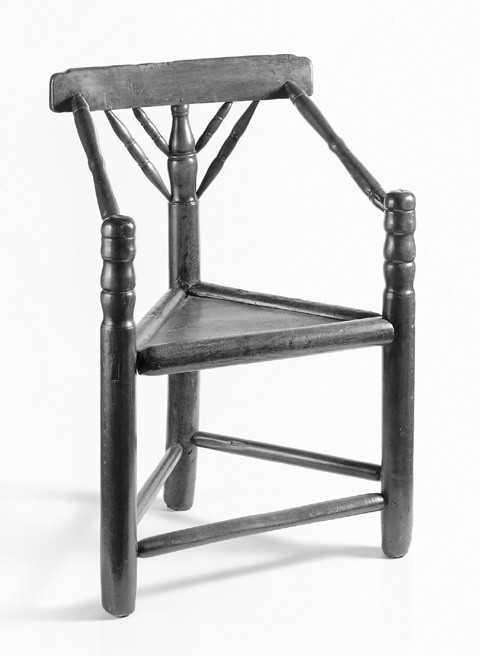
Turned chair, England, 1550–1650. Beech and elm. H. 34", W. 24", D. 19". (Courtesy, Plimoth Plantation; photo, Gavin Ashworth.)
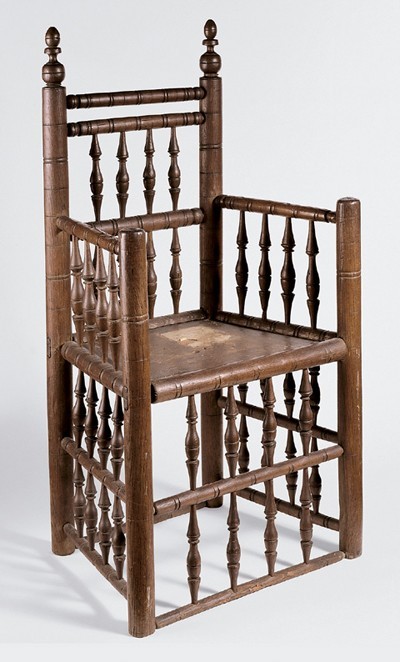
Turned chair, probably Plymouth, Massachusetts, 1630–1655. Red and black ash. H. 45", W. 24 1/2", D. 18 1/2". (Courtesy, Pilgrim Society, Plymouth, Massachusetts, gift of the heirs of William Hedge; photo, Gavin Ashworth.) The white pine seat board is a later replacement.
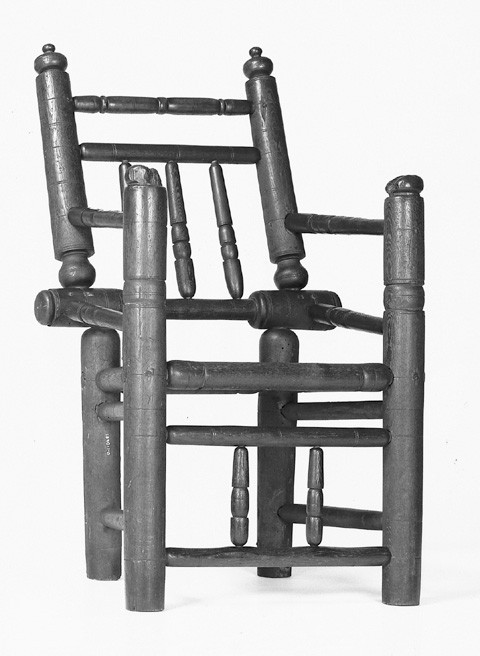
Turned chair, Connecticut, 1650–1700. Ash and oak. H. 41 1/8", W. 23", D. 16 1/2". (Courtesy, Connecticut Historical Society; photo, Robert Bitondi.)

Side view of the turned chair illustrated in fig. 7.
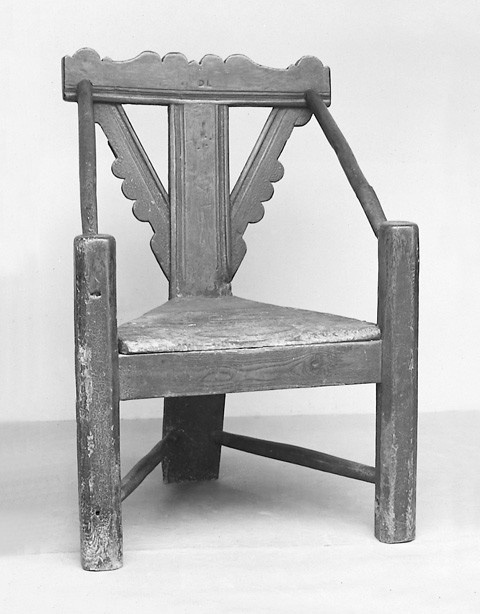
Plain chair, England, seventeenth century. Oak. (Courtesy, Metropolitan Museum of Art.)

Plain chair, Plymouth County, Massachusetts, 1650–1720. White oak and maple. H. 37", W. 20 3/4", D. 16 1/8". (Courtesy, Museum of Fine Arts, Boston; Hezekiah E. Bolles Fund.) This example came from Rochester in Plymouth County. It has a replaced bast seat. Most plain matted chairs probably had rush seats.

Side view of the joined chair illustrated in fig. 1. (Photo, Gavin Ashworth.)
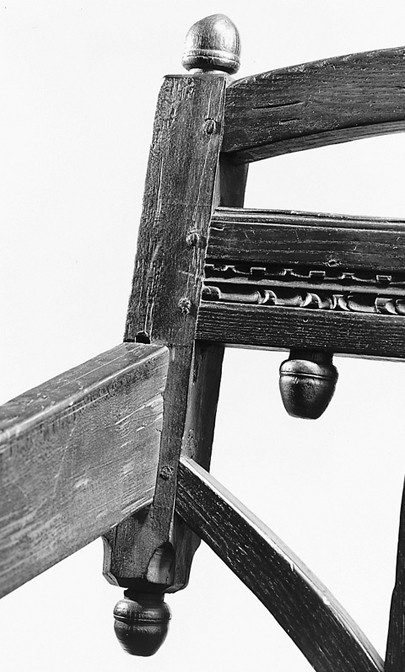
Detail of the back of the joined chair illustrated in fig. 1. (Photo, Gavin Ashworth.)
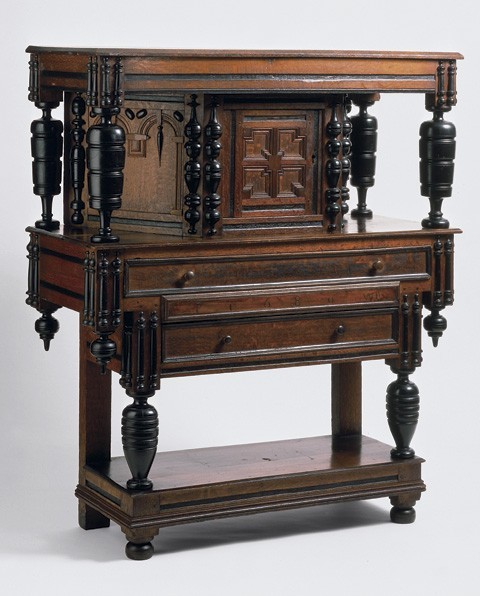
Court cupboard, Newbury, Massachusetts, 1680. Oak, sycamore, maple, and walnut with tulip poplar. H. 57 3/4", W. 50", D. 21 5/8". (Courtesy, Winterthur Museum.)
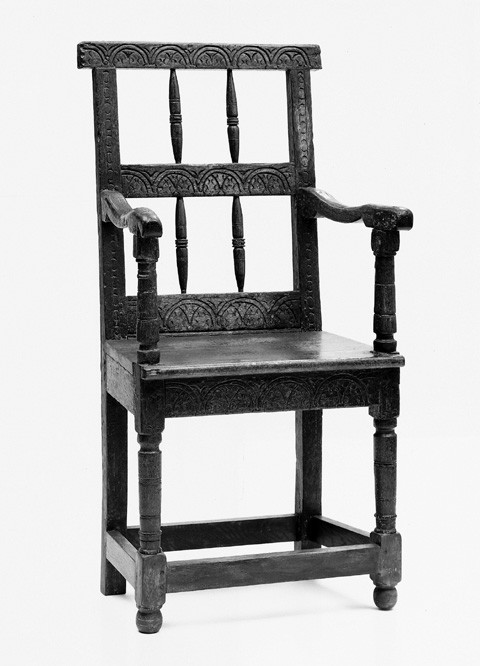
Joined chair, eastern Massachusetts, 1660–1680. Oak. H. 44 1/4", W. 23 1/4", D. 15 1/4". (Courtesy, Museum of Fine Arts, Boston; gift of Aimée and Rosamond Lamb.)
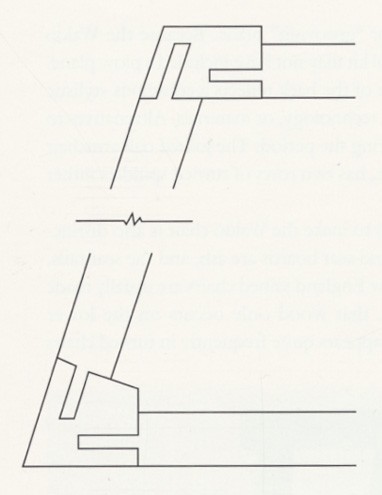
Diagram showing the seat and stretcher construction of a conventional New England wainscot chair.
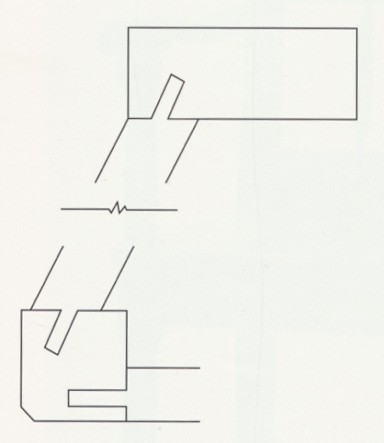
Diagram showing the seat and stretcher construction of the joined chair illustrated in fig. 1.
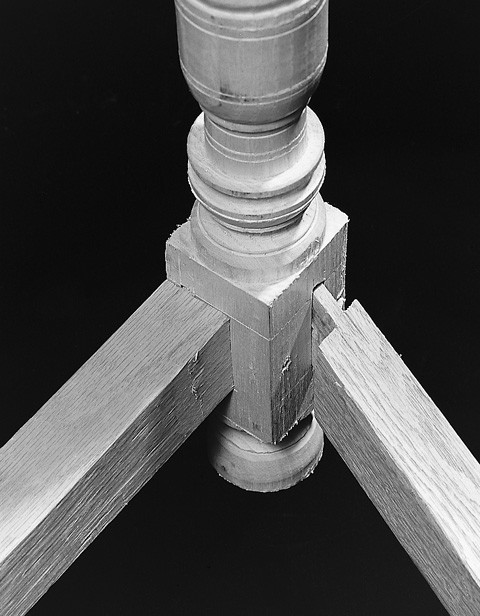
Detail of a reproduction of the joined chair illustrated in fig. 1, showing the joint angles and pins of the stretchers. (Reproduction by Peter Follansbee; photo, Gavin Ashworth.)
